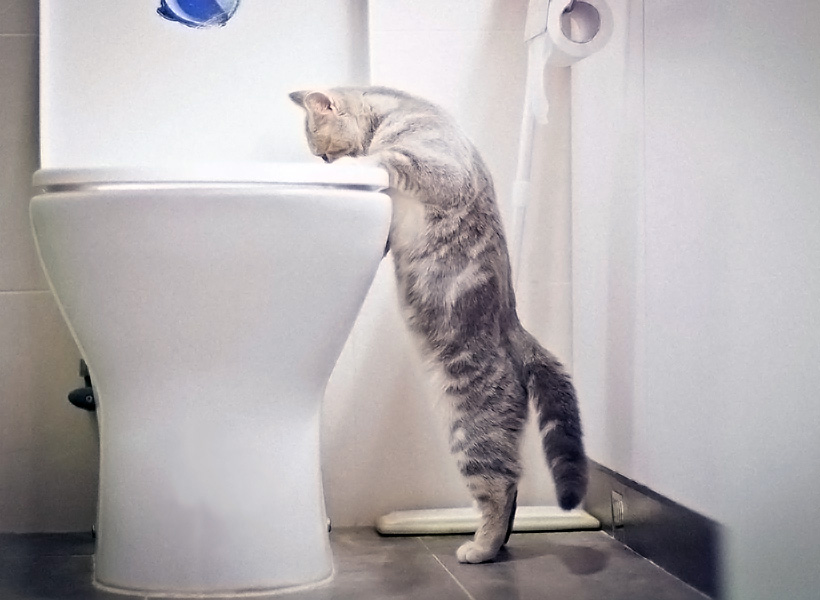Avoid Plumbing Problems: Don't Flush Cat Poop Down Your Toilet - Expert Advice
Avoid Plumbing Problems: Don't Flush Cat Poop Down Your Toilet - Expert Advice
Blog Article
They are making several great annotation relating to How to Dispose of Cat Poop and Litter Without Plastic Bags overall in this post down the page.

Intro
As cat proprietors, it's vital to be mindful of exactly how we throw away our feline buddies' waste. While it might seem hassle-free to flush feline poop down the commode, this technique can have detrimental repercussions for both the atmosphere and human health and wellness.
Ecological Impact
Flushing cat poop introduces hazardous pathogens and parasites into the supply of water, posing a significant risk to aquatic ecosystems. These contaminants can adversely affect aquatic life and concession water high quality.
Health Risks
In addition to environmental concerns, flushing pet cat waste can additionally posture wellness risks to human beings. Pet cat feces may contain Toxoplasma gondii, a parasite that can trigger toxoplasmosis-- a potentially severe illness, specifically for expecting females and people with damaged immune systems.
Alternatives to Flushing
Fortunately, there are much safer and a lot more accountable methods to take care of cat poop. Think about the following alternatives:
1. Scoop and Dispose in Trash
One of the most typical technique of throwing away cat poop is to scoop it right into an eco-friendly bag and toss it in the trash. Make certain to make use of a specialized litter inside story and throw away the waste quickly.
2. Usage Biodegradable Litter
Go with naturally degradable cat clutter made from materials such as corn or wheat. These litters are eco-friendly and can be safely disposed of in the trash.
3. Bury in the Yard
If you have a yard, think about burying pet cat waste in an assigned location away from veggie gardens and water resources. Make sure to dig deep enough to avoid contamination of groundwater.
4. Install a Pet Waste Disposal System
Invest in a pet waste disposal system specifically developed for feline waste. These systems make use of enzymes to break down the waste, lowering odor and ecological influence.
Conclusion
Responsible animal ownership prolongs beyond providing food and shelter-- it also entails correct waste monitoring. By avoiding purging cat poop down the commode and selecting different disposal approaches, we can lessen our environmental footprint and safeguard human health.
Why Can’t I Flush Cat Poop?
It Spreads a Parasite
Cats are frequently infected with a parasite called toxoplasma gondii. The parasite causes an infection called toxoplasmosis. It is usually harmless to cats. The parasite only uses cat poop as a host for its eggs. Otherwise, the cat’s immune system usually keeps the infection at low enough levels to maintain its own health. But it does not stop the develop of eggs. These eggs are tiny and surprisingly tough. They may survive for a year before they begin to grow. But that’s the problem.
Our wastewater system is not designed to deal with toxoplasmosis eggs. Instead, most eggs will flush from your toilet into sewers and wastewater management plants. After the sewage is treated for many other harmful things in it, it is typically released into local rivers, lakes, or oceans. Here, the toxoplasmosis eggs can find new hosts, including starfish, crabs, otters, and many other wildlife. For many, this is a significant risk to their health. Toxoplasmosis can also end up infecting water sources that are important for agriculture, which means our deer, pigs, and sheep can get infected too.
Is There Risk to Humans?
There can be a risk to human life from flushing cat poop down the toilet. If you do so, the parasites from your cat’s poop can end up in shellfish, game animals, or livestock. If this meat is then served raw or undercooked, the people who eat it can get sick.
In fact, according to the CDC, 40 million people in the United States are infected with toxoplasma gondii. They get it from exposure to infected seafood, or from some kind of cat poop contamination, like drinking from a stream that is contaminated or touching anything that has come into contact with cat poop. That includes just cleaning a cat litter box.
Most people who get infected with these parasites will not develop any symptoms. However, for pregnant women or for those with compromised immune systems, the parasite can cause severe health problems.
How to Handle Cat Poop
The best way to handle cat poop is actually to clean the box more often. The eggs that the parasite sheds will not become active until one to five days after the cat poops. That means that if you clean daily, you’re much less likely to come into direct contact with infectious eggs.
That said, always dispose of cat poop in the garbage and not down the toilet. Wash your hands before and after you clean the litter box, and bring the bag of poop right outside to your garbage bins.
https://trenchlesssolutionsusa.com/why-cant-i-flush-cat-poop/

We hope you liked our article about How to Dispose of Cat Poop and Litter Without Plastic Bags. Thanks so much for finding the time to read our piece. Do you know somebody who is inquisitive about How to Dispose of Cat Poop and Litter Without Plastic Bags? Be sure share it. Thank you for your time invested reading it.
Automated Marketing Report this page